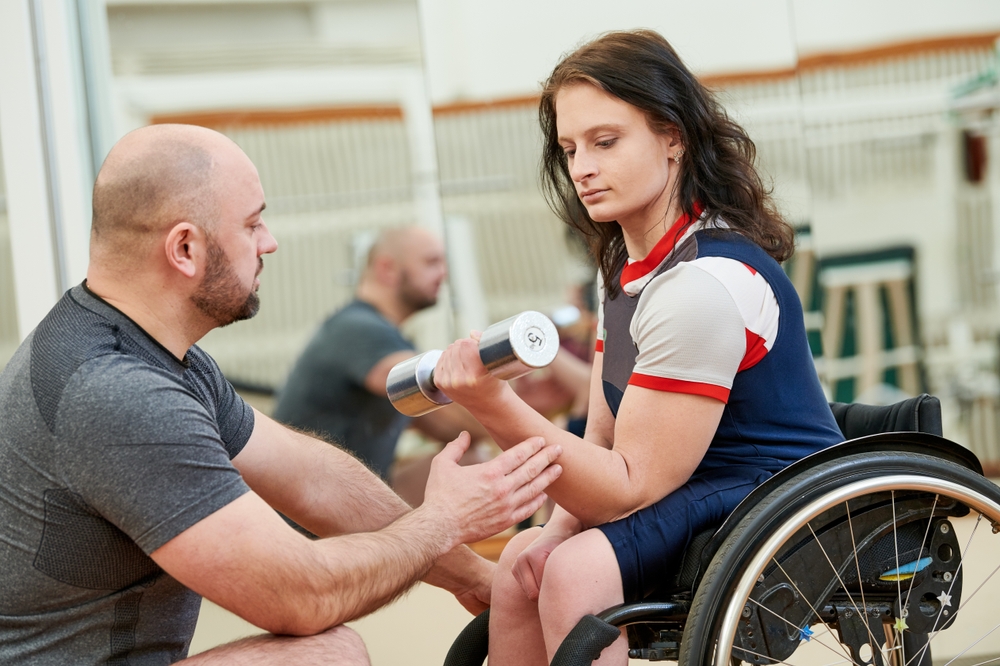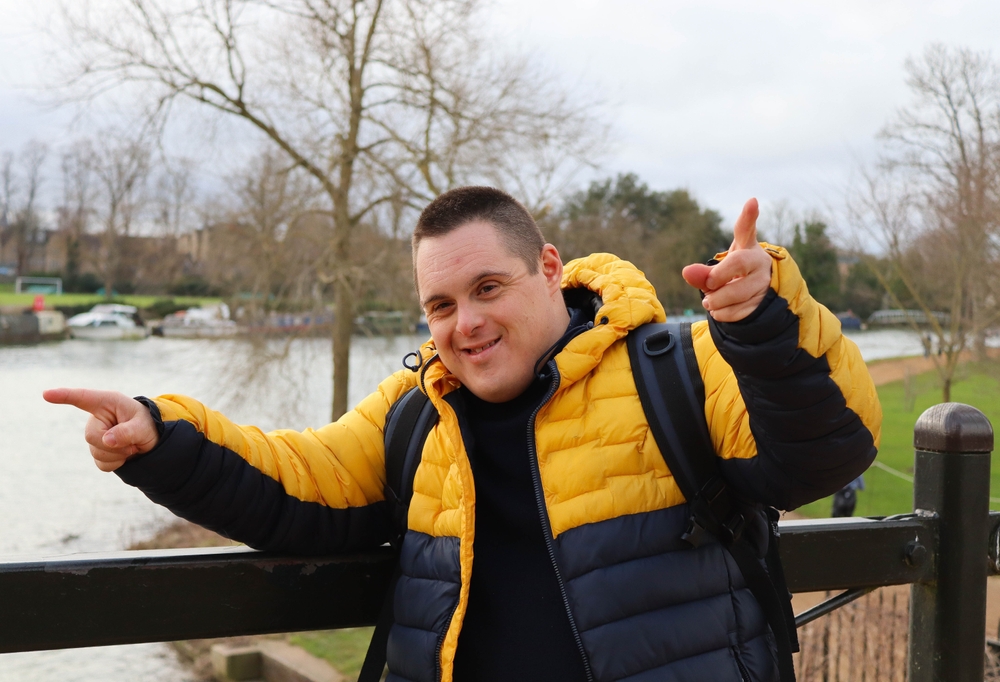Make an Appointment
Physical and sensory disabilities are conditions that affect a person's ability to carry out daily activities. Physical disabilities involve impairments to a person's body, such as their limbs or motor functions, while sensory disabilities involve impairments to a person's senses, such as their vision or hearing. It is important to understand these disabilities, as they can have a significant impact on a person's quality of life.
As one of Australia's leading allied health disability providers, Physio Inq offers a wide range of services to support people with physical and sensory disabilities. From physiotherapy and occupational therapy to speech pathology and exercise physiology, their team of experts is dedicated to helping individuals achieve greater independence and quality of life. Whether you need assistance with mobility, communication, or overall physical health, Physio Inq can be a valuable resource for you or a loved one living with a disability.
In this article, we will provide an overview of physical and sensory disabilities, including the different types and examples of each. We will also answer common questions about these disabilities, including whether a sensory disability is a physical disability, and whether ADHD and dyslexia are considered sensory disabilities. Finally, we will discuss the NDIS services offered by Physio Inq and how they can benefit people with physical and sensory disabilities.
Table of Contents:
I. Introduction
II. What are physical and sensory disabilities?
III. Types of Sensory Disabilities
IV. Examples of Physical Disabilities
V. Examples of Sensory Disabilities
VI. Is a sensory disability a physical disability?
VII. NDIS & Disability Services offered by Physio Inq
VIII. Common Questions about Sensory Disabilities
IX. Conclusion
What are physical and sensory disabilities?
Physical disabilities can have a profound impact on a person's ability to carry out daily activities, such as dressing, eating, and moving around. These disabilities can be caused by a range of factors, including injury, disease, or genetic conditions. Examples of physical disabilities include:
*Muscular dystrophy: a genetic disorder that causes progressive weakness and loss of muscle mass, which can lead to difficulties with mobility and posture.
*Cerebral palsy: a group of disorders that affect a person's movement and posture, caused by damage to the developing brain. This can lead to difficulties with walking, coordination, and fine motor skills.
*Spina bifida: a birth defect that occurs when the spine and spinal cord do not develop properly, which can cause paralysis or weakness in the legs, bladder or bowel dysfunction, and other complications.
*Amputation: the loss of a limb or part of a limb, often due to injury or disease. This can lead to difficulties with mobility, balance, and coordination.
Sensory disabilities, on the other hand, involve impairments to a person's senses, which can include vision, hearing, touch, smell, and taste. These disabilities can also be caused by a range of factors, including injury, disease, or genetic conditions. Examples of sensory disabilities include:
*Blindness: a total or partial loss of vision, which can significantly impact a person's ability to navigate their environment and perform daily activities.
*Deafness: a total or partial loss of hearing, which can make it difficult to communicate and interact with others.
*Neuropathy: a condition that affects the nerves and can cause numbness, tingling, or pain in the hands and feet. This can impact a person's ability to sense touch and coordinate movements.
*Anosmia: a total or partial loss of the sense of smell, which can affect a person's ability to detect dangerous odors, enjoy food, and connect with others through scent.
Understanding these examples of physical and sensory disabilities is important for building a more inclusive and accessible society. By recognizing and addressing the unique challenges faced by individuals with disabilities.

Types of Sensory Disabilities
There are several types of sensory disabilities, each of which can have a significant impact on a person's life. These disabilities can be classified into four main categories:
1. Visual impairments
Visual impairments can range from mild to severe. Blindness is the most severe form of visual impairment, which is defined as a complete loss of vision or the inability to see anything. Low vision is a condition where a person has some vision, but their ability to see details is limited. Color blindness is a type of visual impairment that affects a person's ability to distinguish between certain colors.
2. Hearing impairments
Hearing impairments can also range from mild to severe. Deafness is the most severe form of hearing impairment, which is defined as the complete inability to hear anything. Partial hearing loss is a condition where a person has some level of hearing loss, but they may still be able to hear some sounds.
3. Touch impairments
Touch impairments can be caused by nerve-related conditions or injuries. Neuropathy is a condition that affects the nerves and can result in a loss of sensation in certain areas of the body. Other nerve-related conditions such as spinal cord injuries or multiple sclerosis can also cause touch impairments.
4. Smell or taste impairments
Smell or taste impairments can be caused by a variety of factors such as head injuries, viral infections, or exposure to certain chemicals. Anosmia is a condition where a person has a complete loss of smell, while ageusia is a condition where a person has a complete loss of taste.
It's important to note that sensory disabilities can also overlap or coexist with other disabilities. For example, a person with a visual impairment may also have a hearing impairment or a person with a touch impairment may also have a visual impairment. Understanding the different types of sensory disabilities can help individuals and organizations better accommodate and support individuals with sensory disabilities.
Examples of Physical Disabilities
As mentioned earlier, physical disabilities can have a range of causes and can affect a person's body in different ways. Here are some examples of physical disabilities:
1. Multiple sclerosis: a neurological condition that affects the central nervous system, causing a wide range of physical and cognitive symptoms including muscle weakness, coordination difficulties, and fatigue.
2. Arthritis: a condition that causes inflammation and pain in the joints, leading to decreased mobility and stiffness.
3. Spinal cord injury: damage to the spinal cord that can result in paralysis or loss of sensation below the level of injury.
4. Osteogenesis imperfecta: a genetic disorder that causes brittle bones and frequent fractures.
5. Parkinson's disease: a degenerative disorder of the nervous system that can cause tremors, stiffness, and difficulties with balance and coordination.
6. Polio: a viral infection that can cause muscle weakness and paralysis, particularly in the legs.
7. Ehlers-Danlos syndrome: a genetic disorder that affects the connective tissue in the body, leading to joint hypermobility, skin fragility, and other symptoms.
Physical disabilities can have a significant impact on a person's life, making it difficult to perform everyday tasks and engage in activities that others may take for granted. However, with the appropriate support and accommodations, individuals with physical disabilities can lead fulfilling and independent lives.
Examples of Sensory Disabilities
Sensory disabilities can have a profound impact on a person's daily life, affecting their ability to interact with the world around them. Here are some examples of sensory disabilities:
1. Hyperacusis: a condition characterized by extreme sensitivity to certain sounds, causing discomfort or pain.
2. Vestibular disorders: a group of conditions that affect the inner ear and can cause dizziness, vertigo, and balance problems.
3. Tinnitus: a condition characterized by a persistent ringing or buzzing sound in the ears, which can interfere with hearing and concentration.
4. Dysgeusia: a condition characterized by a distorted or altered sense of taste, making it difficult to enjoy certain foods or identify potential hazards.
5. Photophobia: a condition characterized by extreme sensitivity to light, which can cause discomfort, headaches, and difficulty seeing.
6. Sensory processing disorder: a neurological condition that affects the way the brain processes sensory information, causing difficulties with sensory integration, regulation, and discrimination.
Sensory disabilities can have a significant impact on a person's daily life, affecting their ability to communicate, learn, work, and engage in social activities. However, with the appropriate accommodations and support, individuals with sensory disabilities can overcome many of these challenges and lead fulfilling and independent lives. It's important to recognize and respect the unique needs and experiences of individuals with sensory disabilities and to work towards creating a more inclusive and accessible society.

Is a sensory disability a physical disability?
Sensory disabilities and physical disabilities are often considered separate categories of impairments, as they affect different aspects of a person's functioning. Sensory disabilities involve impairments to one or more of the senses, such as vision, hearing, touch, taste, or smell. These impairments can be caused by a wide range of factors, including genetic conditions, diseases, injuries, or age-related changes.
Physical disabilities, on the other hand, involve impairments to a person's body or physical functioning, such as mobility, coordination, or strength. These impairments can also be caused by a wide range of factors, including genetic conditions, diseases, injuries, or age-related changes.
While sensory disabilities and physical disabilities are distinct categories, there can be some overlap between the two. For example, a person who is blind may also have difficulty with mobility due to a lack of visual cues, or a person who is deaf may have difficulty with coordination due to a lack of auditory feedback. In some cases, sensory disabilities can even lead to secondary physical disabilities, such as the example given in the original prompt of a person who is deaf developing a physical disability due to an injury caused by a lack of auditory warning.
It's important to recognize that individuals with sensory disabilities may have unique needs and challenges that differ from those with physical disabilities and to provide appropriate accommodations and support to address those needs. However, it's also important to recognize that individuals may have multiple impairments that interact with each other in complex ways, and to provide holistic support that addresses all aspects of a person's functioning.
NDIS & Disability Services offered by Physio Inq
Physio Inq is a registered NDIS provider across Australia, offering a wide range of services specifically designed to assist people with physical and sensory disabilities. As an NDIS provider, Physio Inq is dedicated to ensuring that people with disabilities have access to the support they need to achieve their goals, participate in their communities, and live fulfilling lives.
Physio Inq's NDIS services encompass physiotherapy, occupational therapy, speech pathology, and exercise physiology. These services are tailored to the individual needs of each person with a disability, with the goal of improving their quality of life and promoting their independence.
Physiotherapy is an essential service for people with physical disabilities, as it helps to improve their strength, mobility, and flexibility. Physio Inq's team of qualified physiotherapists works with individuals to develop individualized treatment plans that address their unique needs and goals.
Occupational therapy is also a crucial service for people with physical and sensory disabilities. It focuses on helping individuals develop the skills they need to perform daily activities, such as dressing, eating, and using assistive devices. Physio Inq's occupational therapists work closely with individuals to understand their unique challenges and develop customized treatment plans to help them achieve their goals.
Speech pathology is another important service provided by Physio Inq. It focuses on helping people with communication difficulties, such as speech and language disorders, to improve their ability to communicate effectively. Physio Inq's team of speech pathologists is dedicated to helping individuals overcome their communication challenges and improve their social interactions.
Finally, exercise physiology is an important service that can help people with disabilities improve their overall physical health and fitness. Physio Inq's exercise physiologists work with individuals to develop personalized exercise programs that address their unique needs and goals.
Overall, Physio Inq's NDIS & disability services are designed to provide individuals with disabilities the support they need to achieve their goals and live full, active lives. As an NDIS provider, Physio Inq is committed to working closely with individuals and their families to develop personalised treatment plans that address their unique needs and help them achieve their full potential.
Common Questions about Sensory Disabilities
There are several common questions about sensory disabilities that people may have. Here are some answers to those questions
Is ADHD a sensory disability?
ADHD is not considered a sensory disability, as it is a neurodevelopmental disorder that affects a person's ability to concentrate and control their behavior.
Is dyslexia a sensory disability?
Dyslexia is a learning disability that affects a person's ability to read and write, but it is not considered a sensory disability.
What is physical impairment?
Physical impairment refers to any condition that affects a person's physical ability to carry out daily activities, including physical disabilities.
What are examples of sensory impairments?
Examples of sensory impairments include blindness, deafness, neuropathy, and anosmia.
What are the 4 types of sensory processing disorders?
The four types of sensory processing disorder include sensory modulation disorder, sensory-based motor disorder, sensory discrimination disorder, and praxis dysfunction.
Conclusion
Physical and sensory disabilities can have a significant impact on a person's quality of life, but with the right support and services, people with these disabilities can still lead fulfilling lives. Physio Inq offers a range of NDIS services designed to help people with physical and sensory disabilities, including physiotherapy, occupational therapy, speech pathology, and exercise physiology.
It is important to understand the different types of physical and sensory disabilities and the challenges they can present in order to provide appropriate support and accommodations. By raising awareness and providing resources, we can create a more inclusive society where everyone has equal opportunities to thrive.
If you or a loved one is living with a physical or sensory disability and in need of support to live as independently as possible, don't hesitate to reach out to Physio Inq. With a team of experienced allied health professionals, including physiotherapists, occupational therapists, speech pathologists, and exercise physiologists, Physio Inq is ready to provide the care and assistance you need. To schedule an appointment or learn more about their services, visit their website or speak to one of team members today on 1300 731 733
References
"Physical Disability." World Health Organization. Accessed March 13, 2023. https://www.who.int/news-room/fact-sheets/detail/physical-disability."Sensory Disability." Disabled World. Accessed March 13, 2023. https://www.disabled-world.com/disability/types/senses/.
"Cerebral Palsy." Mayo Clinic. Accessed March 13, 2023. https://www.mayoclinic.org/diseases-conditions/cerebral-palsy/symptoms-causes/syc-20353999.
"Understanding Sensory Processing Disorders in Children." Child Mind Institute. Accessed March 13, 2023. https://childmind.org/article/understanding-sensory-processing-disorder/.
"Occupational Therapy." NDIS. Accessed March 13, 2023. https://www.ndis.gov.au/participants/what-funded/occupational-therapy.
"Speech Pathology." NDIS. Accessed March 13, 2023. https://www.ndis.gov.au/participants/what-funded/speech-pathology.
"Exercise Physiology." NDIS. Accessed March 13, 2023. https://www.ndis.gov.au/participants/what-funded/exercise-physiology.
About Physio Inq
Physio Inq is a leading provider of NDIS services in Australia, offering a range of therapies to support people with physical and sensory disabilities. Our team of qualified professionals includes physiotherapists, occupational therapists, speech pathologists, and exercise physiologists who are dedicated to helping our clients achieve their goals and live life to the fullest. To learn more about our services and how we can support you or a loved one, visit our website or contact us today.
Date Published: Tuesday, March 14, 2023
Locate a Speech Pathology
Service Near me
Get the experience & convinence you deserve to support your or a loved one's allied health needs.
Our Speech Pathology team are currently serving & taking appointments in the following states and regions in Australia:
Need to get into direct contact with ur Client Services team? We're all ears. Call our team directly on 1300 731 733






